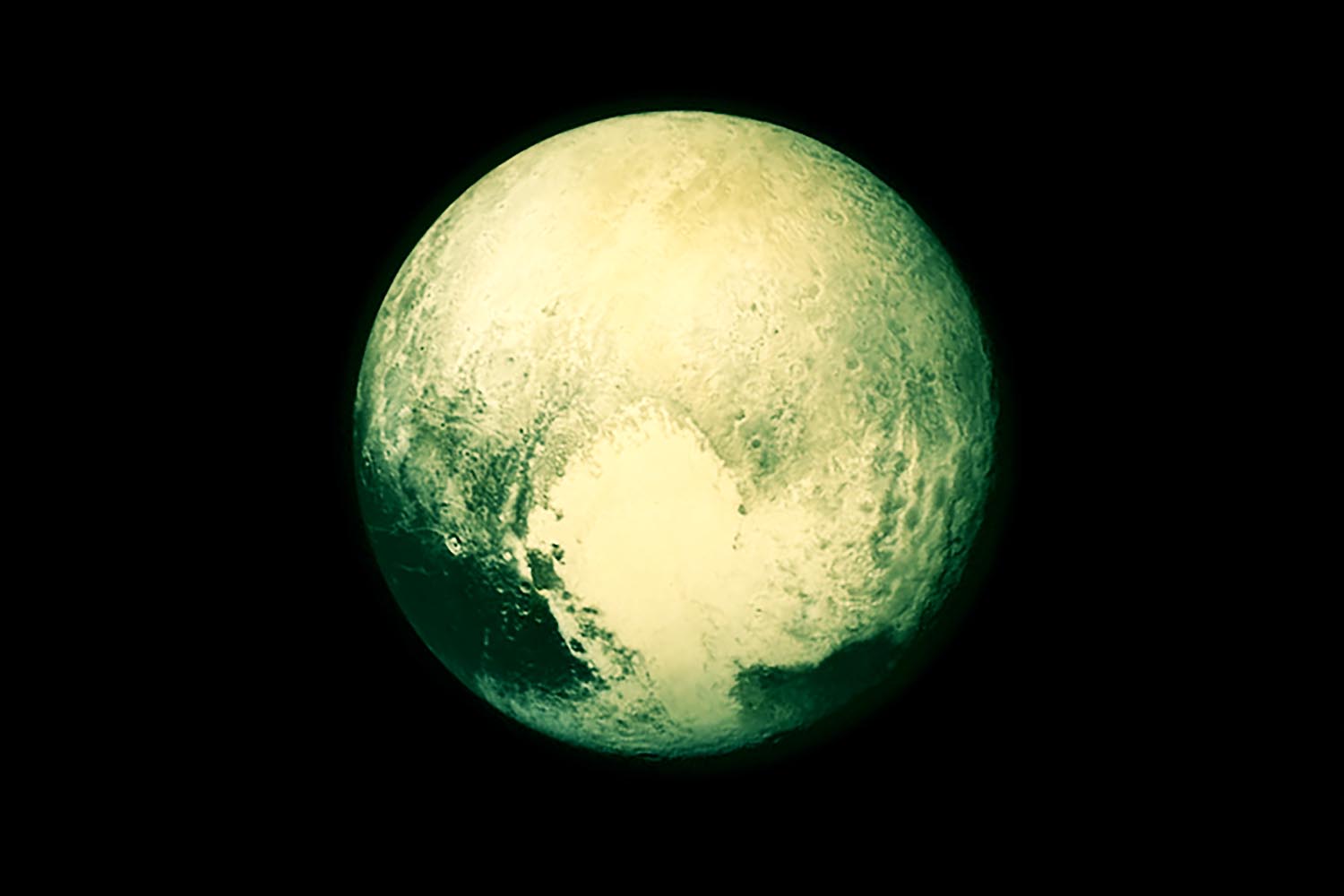
According to a new series of images taken by a NASA spacecraft, Pluto may have a frozen lake. The lake is made of liquid nitrogen and just may hold the key to finding the history of aliens living on the outer ends of our solar system.
NASA CONFIRMS ICE LAKE ON PLUTO
Using high-resolution images, NASA’s New Horizons spacecraft shows a small body of water measuring 20 miles across. NASA states that the nitrogen lake may have existed billions of years ago. Back then, Pluto was thought to have conditions vastly different to what we see today. With a thicker atmosphere, high air pressure and temperature, these conditions may have been perfect for flowing water. Did aliens once inhabit this now desolate wasteland?
HISTORY OF ALIENS TO BE STUDIED
NASA sent New Horizons to Pluto with the mission of collecting as much data as possible. Pluto sits 4.6 billion miles away from Earth and the mission is part of NASA’s Frontier Program. The images clear show a frozen lake on the surface of Pluto as well as signs of channels that could have carried liquids into the past. As many believe, water is a source of life. By studying the history of water on this dwarf planet, perhaps we can see if aliens, in any way, shape or form, existed in the far reaches of our solar system. If aliens did ever exist, however, it was certainly a long time ago.
NEW HORIZONS BRIDGING NEW HORIZONS
While certainly a great discovery by New Horizon’s. finding the presence of nitrogen in the liquid form clearly seems to be something of the past. The dwarf planet, which only circles the sun once every 248 years, has gone through some intense environmental and physical evolution. At the moment, it’s in an intermediate phase between extremes. The last climate peak occurred less than 1 million years ago. Hope for finding aliens on the dwarf planet are not at all realistic. That being said New Horizons continues to send back fascinating data to Earth that helps us better understand our history in the solar system. The probe is due to its next destination in the Kuiper Belt in 2019, where it will continue to bridge new horizons and solve life’s mysteries.


















